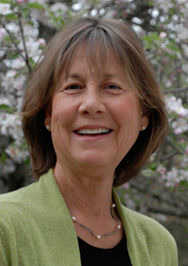Driving onto the Hawley Bradford Mountain estate 1,000 feet above sea level on a cold winter day, I thought of Premier Cru — French official classifications of vineyards that produce superior wine. Brilliant blue skies and white billowy clouds framed the rolling hills and vineyards patterned into the lay of this land.
Most winter mornings, fog blankets the steep and rocky hillside soils of these extraordinary vineyards. Nine acres are planted to organically grown grapes, mostly red, on vines that ideally struggle for water and nutrients.
The intention of my visit with John Hawley and his sons, Paul and Austin, was to examine more closely where we have journeyed in the past four decades of California winegrowing. Where we are headed with the next generation.
In the 1980s Sonoma County was the land of opportunity. John with his bride, Dana, a classically trained biological illustrator, settled their family on 18 pristine acres above West Dry Creek Valley.
A graduate from UC Davis with a degree in enology, John apprenticed in the vineyards and made wine with Lou Preston. Soon after, he was hired at Clos du Bois, and then honed his skills as a winemaker for Kendall-Jackson. Looking to his own property for inspiration, in 1996 John established Hawley Winery.
“Growing up it didn’t seem sustainable to follow our father into the wine business. A one-man show with long hours, it was a struggle,” observed younger son Austin. “When my brother and I returned from working in vineyards and wineries in Australia and New Zealand, we had a more global understanding of the wine business. It was then we realized our commitment to the family land, and that Sonoma County is one of the best growing regions in the world.”
Paul and Austin are graduates of University of California at Santa Cruz. In joining the family business, Paul’s interest and degree in business made him the obvious choice as general manager. Austin, a pre-med student studying biological sciences, had always been interested in winemaking with his father. John appreciates that both sons have great palates for winemaking.
“Culture is changing,” said John, “and each generation brings their own ideas and refinement with it. In early years, we looked to France where great wines were being made. We studied what they were doing and soon realized our grapes in California were riper and we were in a perfect place to make wine. This new generation is not as tied to tradition as we were. They aren’t as concerned with the First Growths of France,” John continued.
“Our real opportunity with multi-generational winegrowing,” Austin said, “is that Dad created the foundation. He cultivated this awesome hillside property and built the winery. It was his generation that convinced consumers that Sonoma County is a world-class wine destination. My brother and I watched the town of Healdsburg convert from hardware stores on the plaza to tasting rooms.”
Defining perhaps the greatest aspects of generational farming, John acknowledges his sons are making better wines.
“Each year they learn more about our vineyard and what it does best,” he said.
Often, while they’re working, Paul and Austin’s children spend time on the farm with their grandparents, experiencing nature as they did growing up.
Like many modern farming families, the Hawley’s are reshaping the landscape of American agriculture. This multi-generational family works together for the betterment of the land.
World-class soils and climate, biodiversity with organic vineyards and assorted gardens, John devoted to falconry, Dana, the matriarch having set the stage with her talent and creativity, using the land as inspiration for magnificent art. Austin perfecting estate wines, designing tasting room furniture from reclaimed wine barrels. Paul directing winery efforts, while crafting Nebbiolo wine and brews from hops grown on their land.
I realize it is sacrilegious to suggest that in America we can have anything similar to a Premier Cru. So what words can we use to acknowledge the vital winegrowing movement that has been underway for decades? Families with reverence for superior land with ideal terroir on which they build their lives. Lives abundant with ingenuity and inspiration, complementary crops and artistic endeavors.
Farming in America is continuingly evolving with sustainable practices and diverse uses for the land. Winegrowing families like the Hawley’s are leading this transformation.
61.6
F
Healdsburg
April 19, 2025








